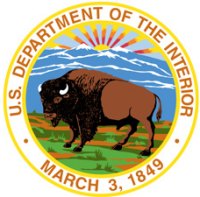California’s booming renewable energy sector and its impact on the state’s delicate desert region has resulted in the U.S. Department of the Interior developing a draft plan covering over 22 million acres of land for the siting of solar and wind energy projects.
According to U.S. Interior Secretary Sally Jewell, the draft Desert Renewable Energy Conservation Plan (DRECP) seeks to strike a balance between conservation and a national Climate Action Plan that calls for expanding clean, domestic energy on public lands to create jobs and cut carbon pollution.
“The draft plan released today will help provide effective protection and conservation of the California desert important for wildlife, recreation, cultural preservation and other uses, while encouraging streamlined renewable energy development in the right places,” she said.
Under the proposal, the Bureau of Land Management would split 10 million acres of public land into separate zones; separating renewable energy development areas and the increasing the size of National Parks. The U.S. Fish and Wildlife Service would also speed up the approval process for new renewable facilities by relaxing its General Conservation Plan.
Since 2009, the Department of the Interior has approved 52 utility-scale solar, wind and geothermal projects on public lands in the USA. President Obama’s Climate Action Plan, released in June 2013, calls for the introduction of a further 20,000 MW of renewable capacity by 2020. Much of this capacity will be centred in California.
17 solar and wind projects are within the designated DRECP region, including BrightSource Energy’s massive $2.2 billion Ivanpah Concentrating Solar Plant in the Mojave Desert, among others.
An investigation by the U.S. Fish and Wildlife Service revealed that a number of birds, including some rare species, had died as a result of burns from flying too close to these large-scale solar farms, and BrightSource was recently forced to pay $20 million to protect a rare desert tortoise at the Ivanpah plant.
These environmental impacts, the Interior Department says, are why a roadmap for the future development of California’s renewable resources is necessary. The draft DRECP is open for stakeholder comment through January 2015 and if adopted, will establish the future of renewable energy production in the state’s desert until 2040.












































